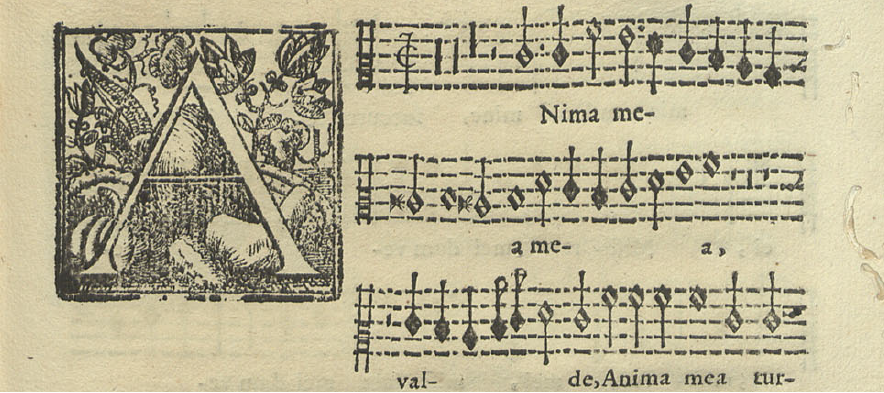
D. João IV • Anima mea turbata est
In 2014 I transcribed the two surviving parts – the altus secundus and the bassus – of Portuguese King D. João IV’s 6-voice motet Anima mea turbata est as an exercise in order to understand if it was possible to reconstruct the remaining four voices from those two.
Following the article by Owen Rees on the Portuguese Journal of Musicology, I thought it could be possible, due to Rees’s identification of a parody mass by Manuel Cardoso that could have used that motet as a model. The exercise had no success but it did teached me to view 6-part counterpoint from another perspective and, at the time when I was studying a parody mass, also helped me to better understand how seventeenth-century Portuguese composers would cast and organize motivic material in motet composition.
The “altus secundus” of the motet is found in the “altus secundi chori” part-book ff. 57-58 and the “bassus” in the “bassus secundi chori” part-book ff. 57-58 of João Lourenço Rebelo’s Psalmi tum Vesperarum, tum Completorii (Rome, 1657). This motet, together with Vivo ego dicit Dominus, survives incomplete in Rebelo’s collection have confirmed attribution to King D. João IV. The frequently attribution of the Adeste fidelis (which is a song from eighteenth-century England), a Crux fidelis and an Adjuva nos Deusare most certainly works by nineteenth-century. The edition is freely downloadable from my Humanities Commons profile and the four of the 1657 edition part-books are available at Portugal’s Digital National Library.
